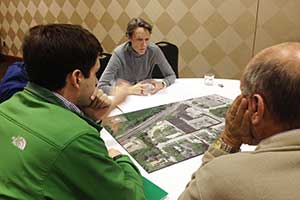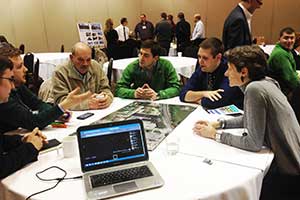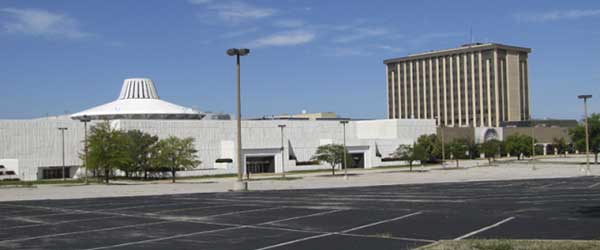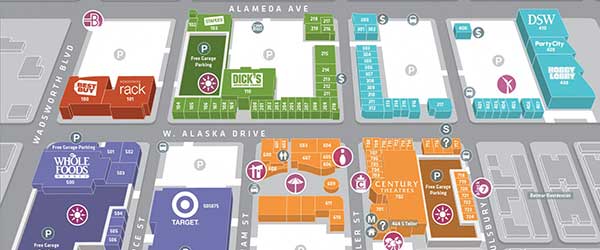Dead regional malls, huge vacancies in strip malls, and empty office buildings have been accumulating in American suburbs in recent years. Much of this change can be attributed to suburban demographic shifts. Particularly since 2000, many babyboomers are now empty-nesters, Gen X is a smaller generation that doesn’t quite fill the void, and the majority of millennials are more interested in an urban lifestyle.

Dunham-Jones’ approach to creating a new life for old suburban sites involves three basic strategies:
- Redevelop
- Reinhabit
- Regreen
When the real estate market is hot, she suggests that redevelopment of the property is often the best option. She cites the example of the dying Belmar Mall in Lakewood, Colorado. A developer wasn’t interested in reviving the mall, but rather wanted to build a downtown area in its place, with a variety of shops and restaurants. Belmar is now 22 blocks of walkable urbanism, and it’s already generating more tax revenue than the mall was at its peak.
At the other end of the spectrum, when the real estate market is stagnant, reinhabiting a vacant site with a more community-serving use can be the way to go. For example, in Cleveland, Ohio, a Big Lots store had sat empty for years with no interested buyers. The city saw the opportunity to fill a need for area youth. The site has now been converted into the Collinwood Recreation Center, with a completely remodeled interior and a parking lot that has been transformed into sports fields.
The third option is regreening a site by creating a park or open space. That was the ideal solution for a dying mall in Columbus, Ohio. The mall was demolished and a park was built in its place. The park is now a popular gathering place and new housing is sprouting up along its perimeters. Regreening the mall has stimulated more development in the whole area.
Applying Retrofitting Suburbia
Following Dunham-Jones’ keynote presentation, attendees had the opportunity to participate in the “Applying Retrofitting Suburbia” session. Five communities presented case studies of challenging sites, and attendees divided into groups to generate ideas for one of those sites.
Battle Creek has a 54-acre site in a regional shopping area adjacent to I-94 in need of more connectivity to the surrounding area. Three Rivers has an old 26,000 square-foot hospital near a river and park that has sat vacant for a long time. Troy has a 48-acre site that contains the old K-Mart world headquarters that has been unused for many years. Plainfield Township has a 5-lane trunkline with shallow lots and multiple curb cuts that make development difficult. And Durand has an old vacant warehouse facility with offices that has been inactive for over 20 years.

- Convert the warehouse into a farmers market with an outdoor stage for concerts
- Create a park on the site between the farmers market and the train station
- Demolish the fire-damaged office buildings and replace with a parking lot
- Demolish the few run-down houses across the street and use that property to create paths connecting the farmers market site to downtown
For more on Ellen Dunham-Jones’ presentation at the MLGMA Winter Institute, please visit MLGMA’s website.
[/fusion_text][/fusion_builder_column][/fusion_builder_row][/fusion_builder_container]
